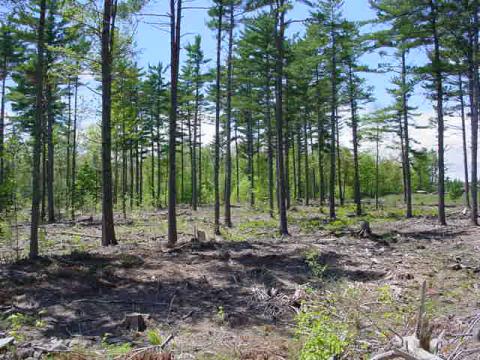Considering a Timber Sale? Don’t Go It Alone, Call Before You Cut

When I see log trucks on our local highways, I often think about where those trees came from. Are the woodlot owners happy with the results of their timber harvest? Did the harvest help them accomplish their goals and leave their land well positioned for future growth?
In a timber harvest, it is natural to focus on the trees that are being removed. What types of trees do you have? How big are they? How much income can they generate? What are the markets for those trees?
These are all important questions, but I will argue that the trees that are left to grow following a timber harvest are more important from a forest health and productivity standpoint. Timber sales often culminate 50 or more years of investment in the form of taxes and management costs and have immediate and long-lasting effects on the future of all of the natural resources and amenities.
Selling timber is possibly the most complicated woodlot activity a forest owner will undertake during their ownership. No single activity has such potential to improve—or degrade—your forest. Proper harvesting can provide income, improve wildlife habitat, and result in trails, better access, views, and healthy and vigorous forests. Poorly planned harvests and exploitive cutting can reduce these values for years to come.
Forests are more than a collection of trees – they are dynamic ecosystems. The climate, soil types, and amount of sunlight reaching the forest floor all influence what plants can grow on a given site. Competition for sunlight creates winners and losers in the forest as some trees develop large crowns to capture sunlight and fuel rapid growth. Trees with less access to sunlight don’t grow as fast and are often crowded out. By controlling competition and managing sunlight, foresters favor the growth of trees they want to grow. Depending on the interests of the landowner they are working for, trees may be favored for their timber value, wildlife value or aesthetic value.
The trees that are left to grow following a timber harvest set the stage for the future. By leaving some good quality trees to grow on your land and creating the light conditions to foster the growth and development of the forest you want – you are setting the stage for a healthy, productive forest.
Proper harvesting can have many positive outcomes: generating revenue for a landowner; enhancing the future growth and value of the remaining trees; creating a diversity of tree species, sizes and habitat elements for wildlife; and improving access for recreation.
Recent research suggests that over 1/3 of the forests in northern New England are in a degraded condition as a result of past harvesting practices that did not consider the long-term health and productivity of our forests. Many of these harvests removed only the high-quality, merchantable trees while leaving the poorer-formed and suppressed trees to shape the future forest.
Licensed foresters can help you manage your woodlot. They will work with you to determine what you want your land to look like in the future while at the same time offering management options for you to consider. With management, trees are cut but they are done so with your input while maintaining the integrity and health of your forest.
Are you thinking about a timber harvest on your property? UNH Cooperative Extension has a forester in each county who can help you learn more about your land and what options and opportunities you have, as well as connecting you with resources and professionals that can help you. For more information, please contact Carroll County Forester Wendy Scribner at wendy.scribner@unh.edu or visit www.nhwoods.org.
